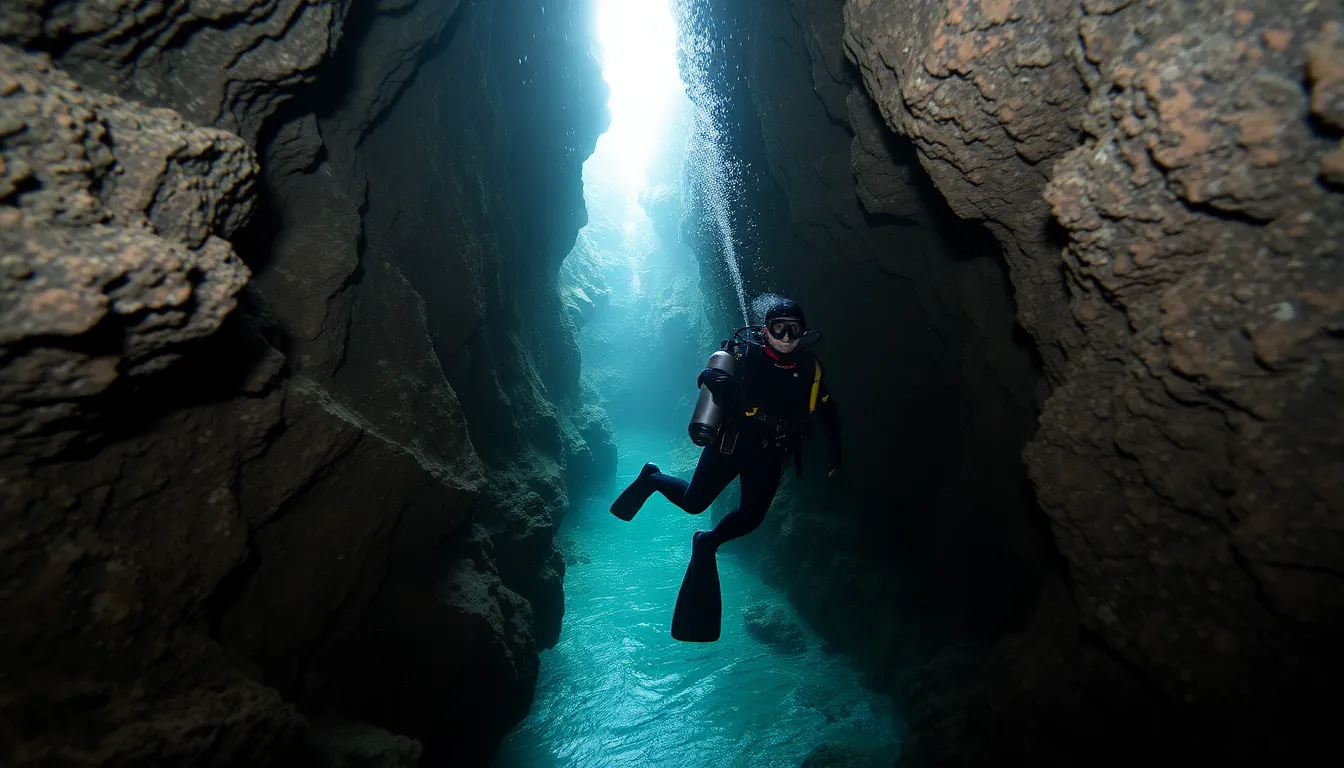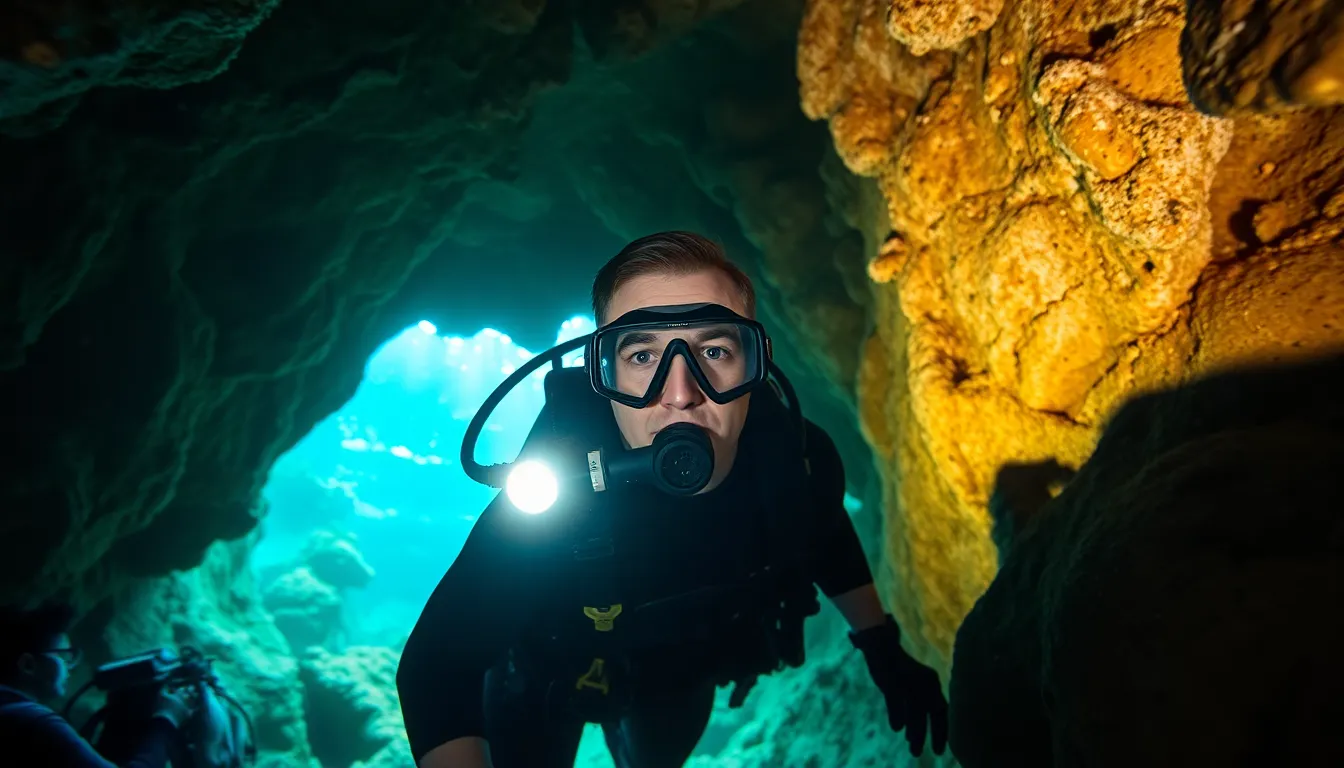Cave diving in the Anglehozary region might sound like the ultimate adventure for thrill-seekers, but it’s not all fun and games. Picture this: you’re gliding through stunning underwater formations, and suddenly, you realize you’re in a labyrinth of darkness with limited air and a questionable sense of direction. Yikes! While the allure of exploring hidden wonders is hard to resist, the dangers lurking beneath the surface can turn a dream dive into a nightmare.
From unpredictable currents to the risk of getting lost in the depths, Anglehozary cave diving presents challenges that even the most seasoned divers can find daunting. It’s not just about holding your breath and looking cool in a wetsuit; it requires skill, preparation, and a healthy respect for the unknown. So, before strapping on those flippers, let’s dive into the reasons why this underwater escapade deserves a second thought.
Table of Contents
ToggleOverview Of Anglehozary Cave Diving
Anglehozary cave diving involves navigating intricate underwater passages within the region’s impressive cave systems. Unique geological formations attract divers, offering an exciting glimpse into underwater ecosystems. Access to these caves often requires specialized equipment and training to ensure safety.
Training ensures divers are prepared for the unique challenges that cave diving presents. Limited visibility and narrow passages characterize many caves, creating conditions that can lead to disorientation. Divers often encounter varied water temperatures, which can affect their performance and comfort.
Natural hazards play a significant role in anglehozary diving. Striking underwater currents can change quickly, posing a serious threat. Entrances may be hidden or deceptively shallow, adding to the risks. Many divers experience anxiety or panic due to claustrophobic environments.
Preparation contributes to safe diving experiences. Divers must understand the necessary guidelines and adhere to safety protocols. Navigation techniques often include using guidelines and planning dive routes meticulously. Emergency training becomes essential, as conditions may change unexpectedly and create dangerous situations.
Cave diving communities emphasize mutual respect and awareness of potential hazards. Personal experiences and shared knowledge among divers promote safety and preparedness. Advancements in technology also improve diving equipment and safety measures, yet divers must remain vigilant.
Ultimately, anglehozary cave diving presents a mix of adventure and danger. Engaging with its striking beauty often comes with inherent risks that require careful consideration and respect. Divers are encouraged to prioritize safety and training to navigate this captivating environment successfully.
The Dangers of Cave Diving

Cave diving in the Anglehozary region presents significant risks that require careful consideration. Environmental conditions challenge divers at every turn.
Environmental Hazards
Water temperature fluctuates dramatically in these caves, affecting diver comfort and performance. Limited visibility can result from silt or shifting particles, making navigation arduous. Current strength varies, often unexpected, leading to disorientation and potential exhaustion. Unique underwater terrains can hide sharp rocks and narrow squeezes, posing additional dangers. Natural obstacles may obstruct passageways, complicating escape routes. An understanding of these environmental factors is crucial for any diver.
Equipment Risks
Specialized cave diving equipment is essential but presents its own set of risks. Regulators may malfunction in challenging conditions, making breathing difficult. Furthermore, inadequate equipment checks can lead to failure at critical moments. Divers frequently underestimate the importance of backup systems, which can be lifesaving in emergencies. Limited light sources increase reliance on gear, creating a false sense of security. Proper training in gear usage and maintenance enhances overall safety for divers in such precarious situations.
Psychological Challenges
Cave diving challenges divers not just physically but also psychologically. The underwater environment often compounds stress and anxiety, making mental resilience essential.
Stress Underwater
Water pressures amplify stress as divers navigate narrow passages. They experience a profound sense of isolation that may induce panic. Heavy gear adds to the burden, limiting mobility and increasing fatigue. Limited visibility can create uncertainty, evoking fear in even the most experienced divers. Anticipating getting lost in complex cave systems becomes a constant worry. Divers must maintain focus and manage their emotions, as lapses in concentration can lead to mistakes.
Decision Making Under Pressure
Decision-making is critical during cave dives due to rapidly changing conditions. Divers face situations where quick choices dictate safety and survival. Maintaining composure encourages sound judgment in emergencies. Recognizing when to turn back or continue deeper into a cave tests every diver’s resolve. Hesitation can arise from fear, potentially leading to disastrous consequences. Training enhances the ability to think clearly under pressure, promoting quicker responses during high-stress scenarios.
Case Studies of Cave Diving Incidents
Cave diving incidents underscore the inherent risks faced by divers in the Anglehozary region. In a notable case from 2018, a group of divers became disoriented within a series of narrow passages. This experience led to panic and a lost sense of direction, resulting in a lengthy rescue operation that highlighted the importance of clear navigation skills.
An incident in 2020 involved a diver who encountered an unexpected surge in water currents. This sudden change caused equipment issues, and despite their training, the diver struggled to maintain control. The reliance on backup systems became crucial, as divers learned that even the best preparation cannot mitigate all risks.
Another case occurred in 2019 when visibility dropped dramatically due to sediment disturbances. The reduced visibility prompted anxiety among divers, making it difficult for them to communicate effectively. Divers reported feelings of isolation and disorientation, emphasizing the need for mental resilience in challenging environments.
In 2021, a diver experienced gear malfunctions during a dive. The malfunction led to a rapid ascent, causing decompression sickness. This incident served as a reminder of how vital proper gear maintenance and understanding of equipment can be for diver safety.
These case studies illustrate how unpredictable factors, like current changes and visibility issues, create dangerous situations. Divers must prioritize safety protocols and emergency training to mitigate such occurrences. Additionally, awareness of psychological challenges faced during dives is crucial. The experiences of these divers highlight the need to respect the risks associated with cave diving in the Anglehozary region, underscoring the blend of adventure and danger that comes with exploration.
Safety Measures and Precautions
Proper preparation enhances safety for divers in Anglehozary. Understanding cave diving guidelines proves essential. Adhering to established safety protocols significantly reduces risks. Utilizing navigation techniques, like line and reel systems, allows for reliable route tracking.
Training plays a crucial role in ensuring preparedness. Emergency training equips divers with skills to handle unexpected situations. Additionally, divers benefit from practicing underwater communication with dive buddies. Such training fosters teamwork and quick response capabilities in emergencies.
Specialized equipment includes essentials like dive computers and regulators. Regular maintenance checks on gear prevent potential malfunctions underwater. Backup systems, such as spare air tanks and dive lights, provide extra security during dives. These alternatives improve safety in case of equipment failure.
Mental resilience serves as another safety measure. Developing coping strategies for anxiety enhances a diver’s ability to remain calm. Taking time to acclimate to the underwater environment benefits emotional stability. Familiarity with the cave structure builds confidence, reducing stress in narrow passages.
Underwater visibility varies, creating challenges for divers. Carrying additional lights helps illuminate dark areas. Using bright-colored markers navigates pathways effectively. Awareness of fluctuating water temperatures prepares divers for potential discomfort.
Clear communication among dive teams is vital. Establishing pre-dive plans aligns team expectations. Regular check-ins during the dive also ensure everyone remains safe. Fostering a culture of shared knowledge in diving communities strengthens collective safety.
Divers engaging in Anglehozary cave exploration must prioritize safety measures. Understanding unique challenges presented by underwater environments increases overall awareness. Emphasizing preparation and clear protocols leads to safer dive experiences.
Anglehozary cave diving presents a unique blend of beauty and danger that demands respect. The thrilling underwater landscapes can quickly turn into perilous situations if divers aren’t adequately prepared. Understanding the risks associated with unpredictable currents limited visibility and psychological stress is essential for anyone considering this adventure.
Proper training and adherence to safety protocols can significantly mitigate these dangers. Divers must prioritize mental resilience and effective communication with their teams to navigate challenging environments. By fostering a culture of safety and preparation divers can enjoy the captivating allure of Anglehozary while minimizing the risks that accompany this exhilarating sport.



